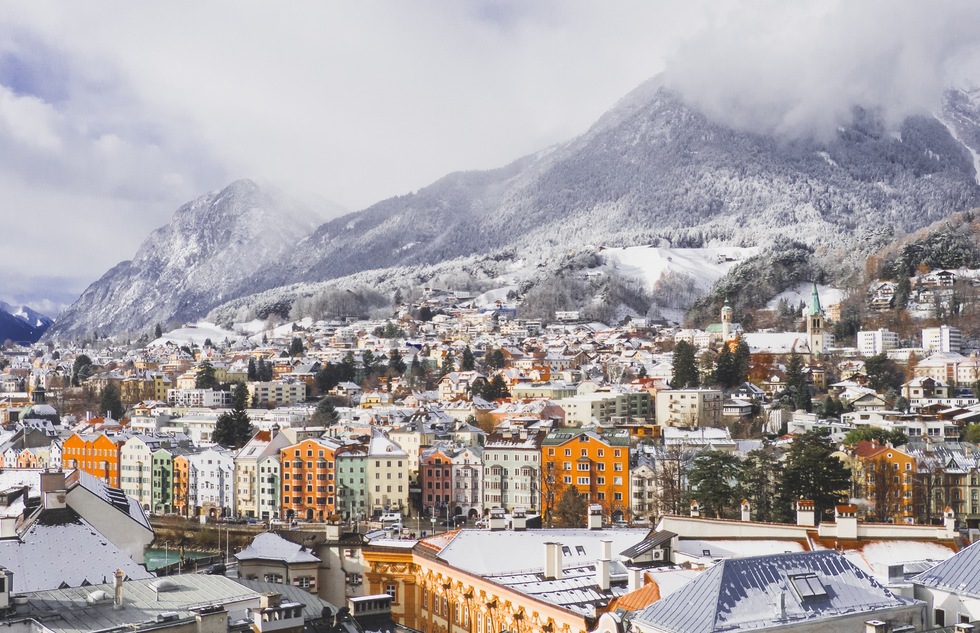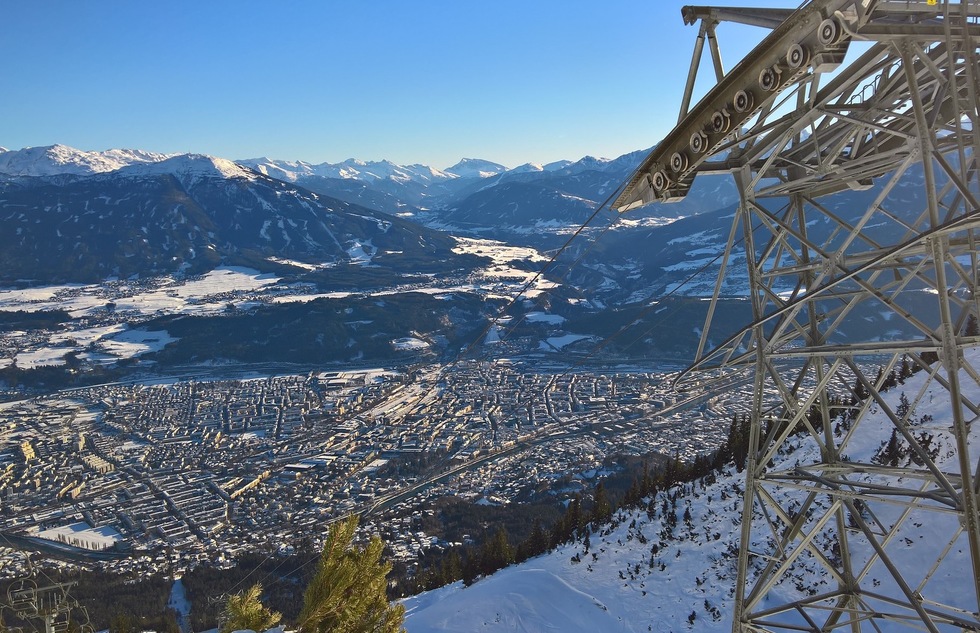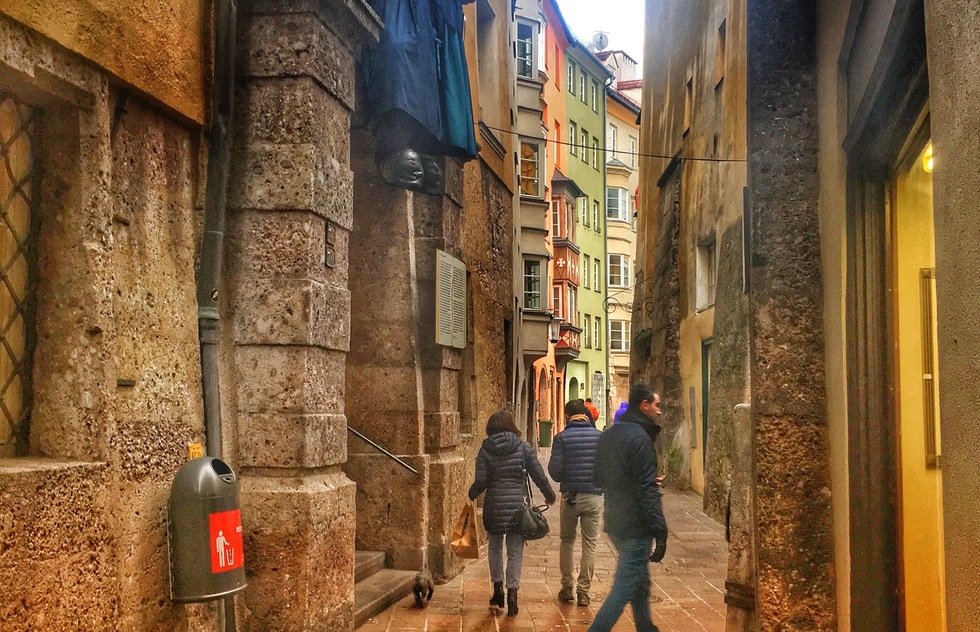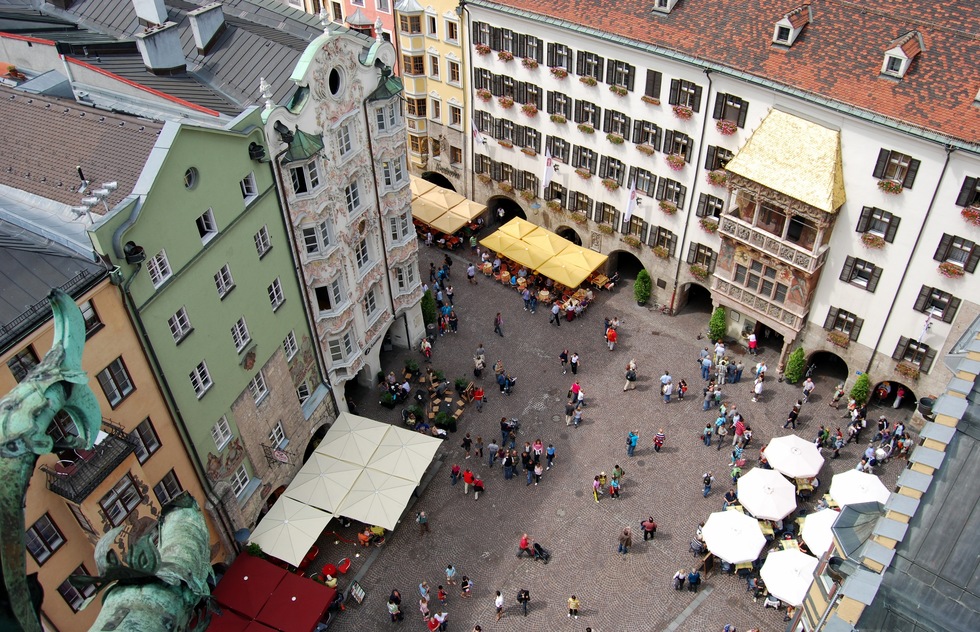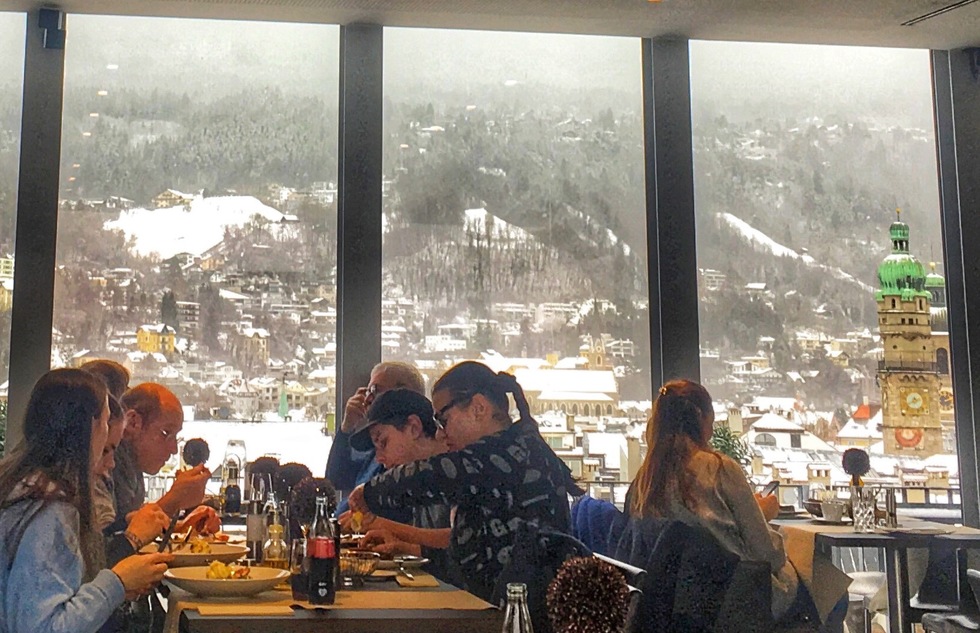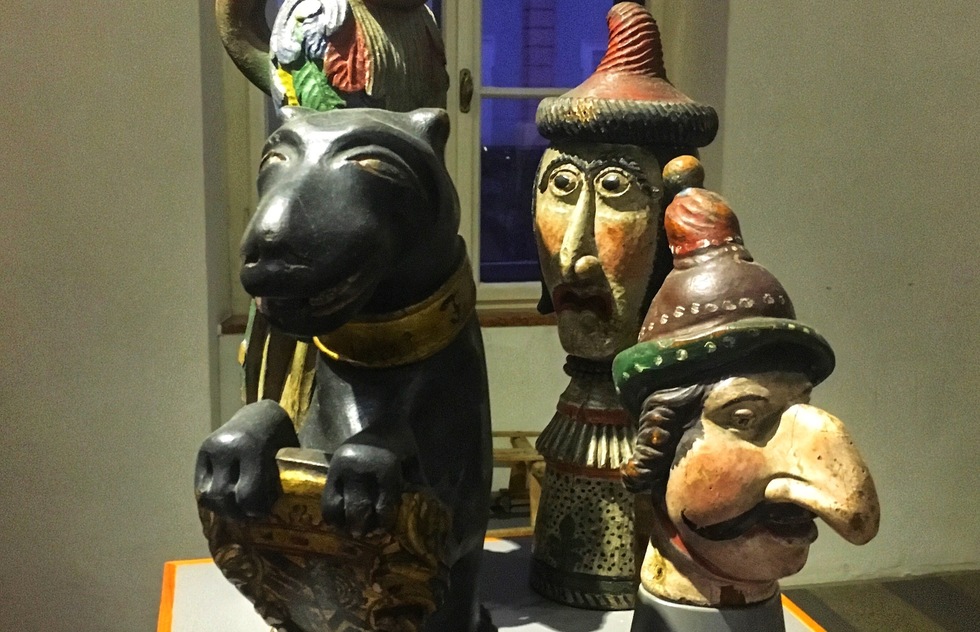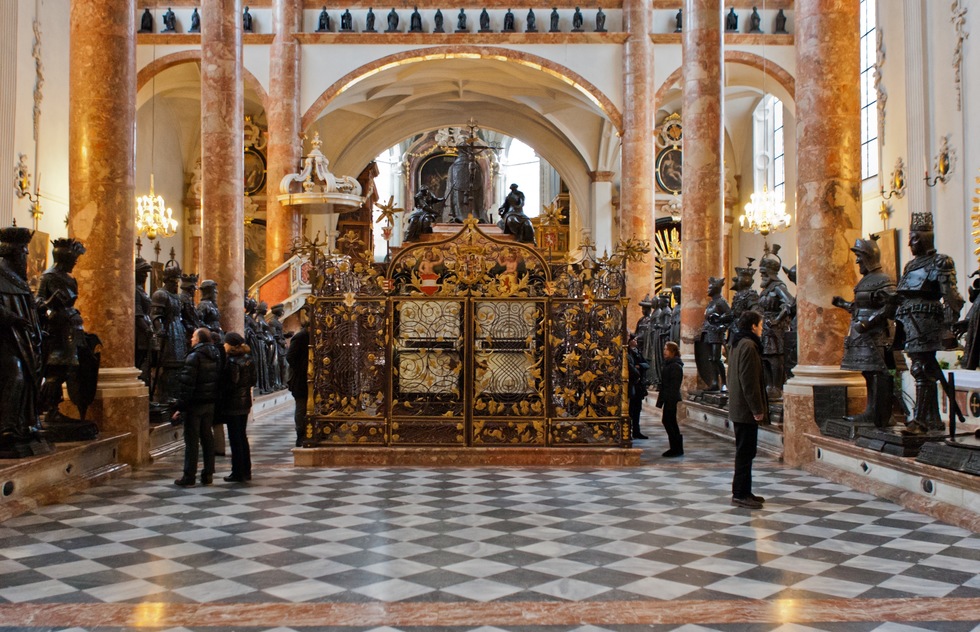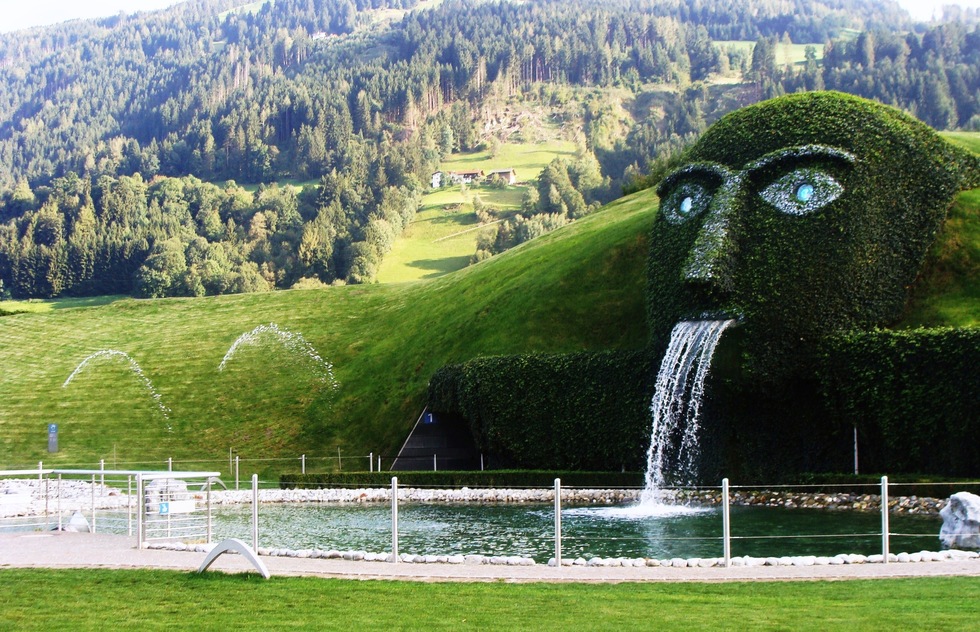The Top Things to See and Do in Innsbruck, Austria
By Pauline FrommerIf there were beauty pageants for cities, Innsbruck would snag the winner's sash every time. Not too big and not too small, the capital of western Austria's Tyrol region is nestled in a pleasant valley, with part of the city climbing up the steep wall of the Alps to the north and other ranges looming to the south. Innsbruck itself is a melange of Baroque churches, gabled houses, and twisting streets, a few so narrow they cannot admit cars. You could spend all your time snapping photos of medieval houses surrounded by snow-covered peaks—but there's a lot more than scenery to keep you busy. The city punches well above its weight when it comes to culture and outdoor activities. Here are just a few of the things you should experience if you're lucky enough to visit.
As you'd expect from a place that has hosted the Winter Olympic Games two times (in 1964 and '76), Innsbruck is a skiing mecca. There are eight major ski areas nearby, and all of them are easy to access, whether by dedicated public buses or, in the case of Nordkette, by cable car from the heart of the city. In all, more than 500 meters (310 miles) of trails crisscross the immediate vicinity, and many runs last half an hour or more. You can even tackle the Stubai Glacier, which has half pipes and natural jumps for advanced skiers and snowboarders. In the summer months, the region's slopes are taken over by hikers who get to view some of the most beautiful alpine scenery in Europe.
Innsbruck's historic core is over 500 years old. A delight to explore, the neighborhood is a collection of cobblestone streets, boutiques, medieval buildings, and sidewalk cafes.
The most famous landmark in the old town, the golden balcony on the right side in the photo above was completed in 1500 to commemorate the marriage of the Emperor Maximilian I and Bianca Maria Sforza—a union that brought the Duchy of Milan into the Holy Roman Empire. The royal newlyweds would watch tournaments and festivals in the square below from this perch. Things soured, though, when Bianca failed to produce an heir. When she died, the emperor didn't attend her funeral or even commission a gravestone. And that, kids, is why you should marry for love, not to expand the kingdom. The roof, for its part, still glistens in the sunlight but it's not covered with actual gold. From the start, fire-gilded copper tiles have been responsible for the glow. Below the balcony, a fresco depicts Maximilian standing between Bianca and his beloved first wife, who died young after a fall from a horse.
To continue the history lesson, buy tickets to enter the Hofburg, a Baroque palace that's largely the work of Austria's formidable 18th-century empress, Maria Teresa. She had the place built on the site of Maximilian's original residence. It makes for a fascinating visit if you're interested in karma or the differing tastes of male and female rulers.
Karma first: In 1765, Maria Theresa ordered the citizens of Innsbruck to provide the royal family with two weeks' worth of food and drink for the wedding celebration of her son, a request that didn't go down well, seeing as how the region was experiencing a severe famine at the time. Ten days into the party, the empress's beloved husband dropped dead from a heart attack. Maria Theresa was so distraught she created a new order of nuns to say a daily mass, in perpetuity, for her dearly departed. She also had his bedroom turned into a lavish chapel; you'll see it when touring the castle.
Pictured above is the Riesensaal (Giants' Hall), the part of the palace traditionally devoted to paintings of the monarch's ancestors. But Maria Theresa felt that her children, and the future they represented, were more important than those who'd come before. So when you visit, you'll see massive family portraits of those offspring—the ones who lived to adulthood as well as those who didn't. The latter are represented by toddlers in gray wigs standing atop clouds.
While we're on the subject of royal residences, one of the most intriguing day trips from Innsbruck is to Ambras Castle, the Smithsonian of the Tyrol in its day. In the 1570s, Archduke Ferdinand II filled this palace with wonders from around the world: oddities of nature, impressive armor, important art. Much of his trove is still viewable today, and the castle's Spanish Hall is considered one of the most beautiful late Renaissance structures in Austria.
Immerse yourself in folk art and culture at Tiroler Volkskunstmuseum, one of the finest anthroplogical institutions in Europe. Located next to the Hofkirche (Court Church), the museum offers a whirlwind tour through the lives of average Tyroleans over the last several centuries. That means extensive collections of farm implements, household items, clothing, ecclesiastical art, and folk art, alongside rooms that re-create dwellings across the region. Beyond the beauty of the objects displayed, their uses are illuminated via an excellent English-language audio tour narrated by talented storytellers (ID required to borrow a headset).
The Hofkirche, the grand royal church next to the museum, was supposed to be the final resting place of Emperor Maximilian. But as often happens in construction, the tomb was late being finished. Really late. In fact, it wasn't completed until 100 years after Maximilian's death. By then, no one wanted to move his remains, so he's actually buried about 500km (311 miles) to the east, in Wiener Neustadt outside Vienna. Still, the cenotaph created in Innsbruck for the ruler is impressive. A massive tomb is surrounded by bigger-than-life-size bronze statues of Maximilian's ancestors and those he considered his spiritual ancestors, such as England's King Arthur. Panels on the sides of the tomb feature marble friezes depicting scenes from the emperor's life. Be sure to keep your headphones on from the Volkskunstmuseum for helpful descriptions of the church's interior.
Three of Innsbruck's top attractions are grouped in a wooded park on the outskirts of town. All have splendid views, particularly the Bergisel Ski Jump Tower, which you can visit even if you have no plans to attach skinny planks to your boots and launch yourself from the hill. Created by the late celebrity architect Zaha Hadid in 2001, the tower has a panoramic viewing platform and is accessible either by stairway or funicular. In season, the ski jump is often used for training by would-be Olympic athletes. Nearby is another type of panorama, a giant history painting in the round, created to commemorate an important battle between the Bavarians, backed by Napoleon, and the Tyroleans in the service of the Hapsburg Empire. A contemporary museum was created to house the painting. The building is adjacent to the Kaiserjägermuseum, dedicated to the military history of the region.
Located about 25 minutes outside Innsbruck, the Swarovski Kristallwelten in Wattens is a whimsical museum created by multimedia artist André Heller and the Swarovski crystal jewelry company, which is based here. This "world of crystals" feels like a theme park, but it's artfully done, with seven underground galleries containing 3D light shows and crystal re-creations of famous artworks by Andy Warhol, Salvador Dalí, and others. Of course, a massive gift shop is attached.
With paintings by Breughel, Rembrandt, and a number of Austrian artists such as Gustav Klimt, the Tiroler Landesmuseum houses noteworthy works by masters great and small. Pictured is Joseph Anton Koch's Neoclassicist take on Shakespeare's Macbeth. Be sure to pick up headphones at the front desk (free with admission) for the informative audio tour.
Your look will only cost, oh, a few thousand euros. Beyond places to buy traditional Tyrolean garb, which is still worn today on special occasions, Innsbruck has malls, boutiques, and department stores selling European goods of all sorts.
Innsbruck's grand boulevard goes past shops, sidewalk cafes, restaurants, Glühwein stands, and, in season, a traditional Christmas market. Much of the thoroughfare is pedestrian-only. It's the heartbeat of the city and a fun place to mingle with locals.
A final fab thing to do: Leave! Driving an hour or two from Innsbruck can take you to one of five nearby countries: Italy, Germany, Switzerland, Liechtenstein, and France. That makes the city an ideal base for further explorations.





